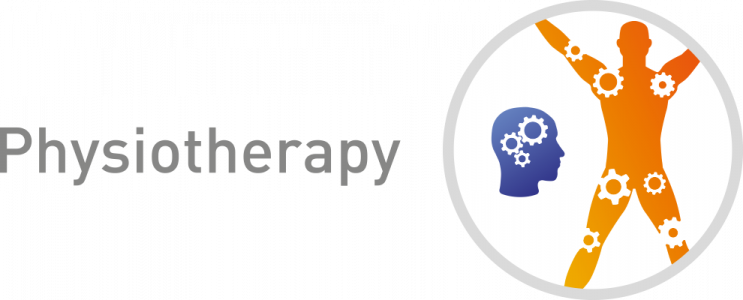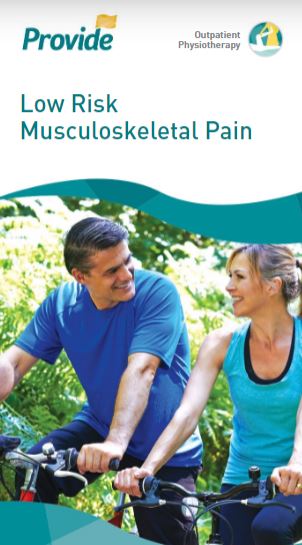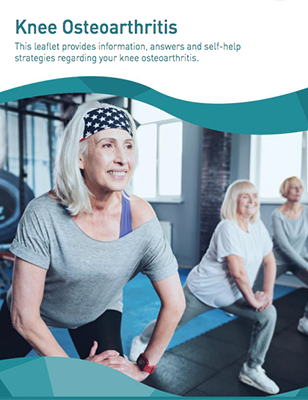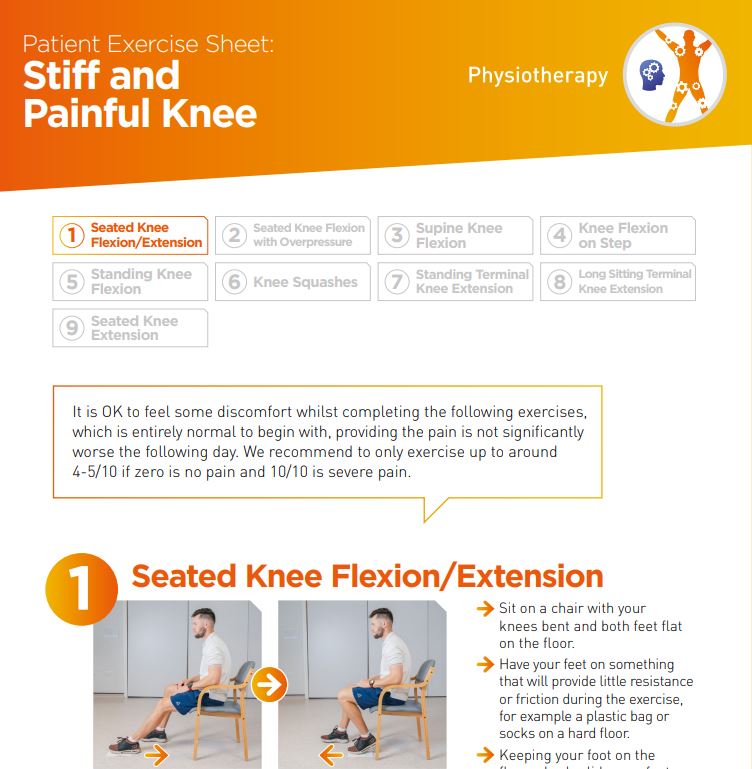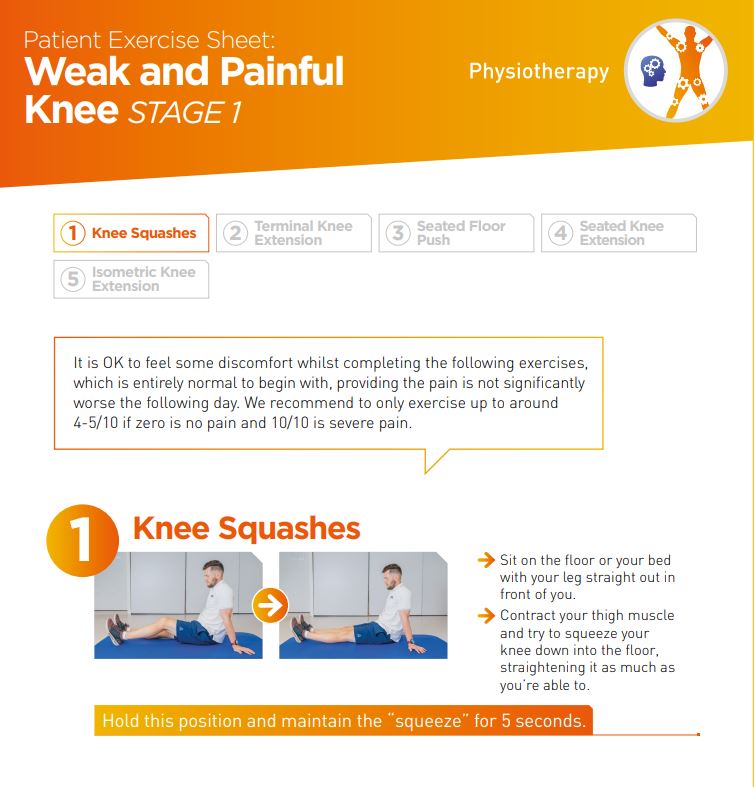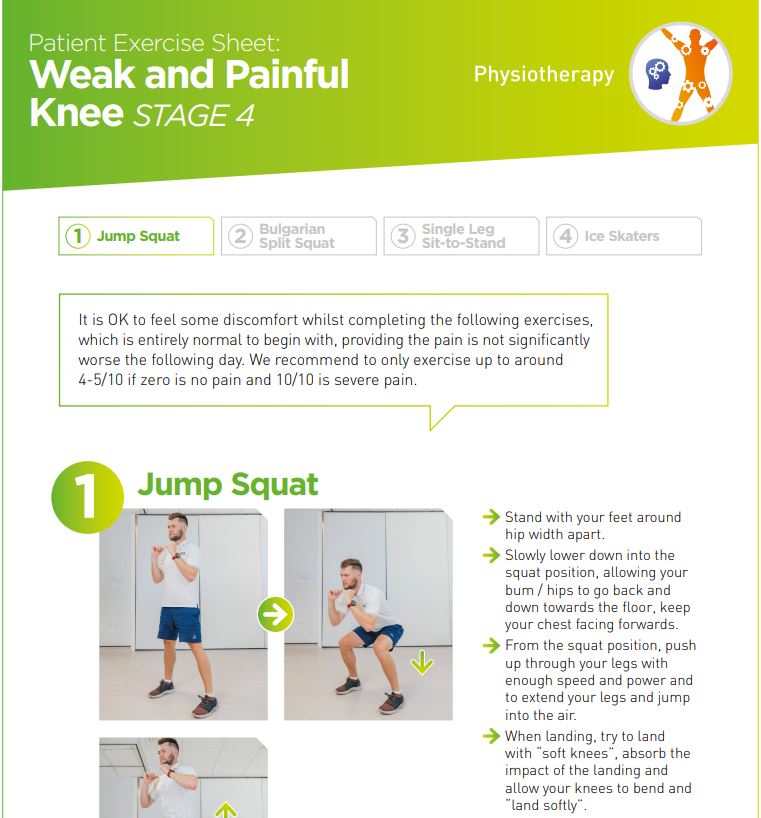Overview
Knee pain is a common problem for children and adults.
There are many different causes for knee pain at different stages of life although most will improve with simple management and will not require surgery.
Knee pain can be related to the joint or soft tissue structures including the ligaments or tendons. The hip and foot position can also contribute to knee problems.
Find out more about your knee pain in the other sections for further help.
If you are not sure of the cause of your knee pain then click below to complete our Musculoskeletal Symptom Checker to learn about potential causes of your symptoms and the best ways to manage these in the Self Help section.
Type of Knee Pain
Pain With No Obvious Injury
Click Here to see some exercises that our physiotherapists would recommend to help with movement of your knee.
Watch these three short videos of an internationally-respected physiotherapist explaining knee osteoarthritis, also known as OA, and why it hurts.
Watch these three short videos addressing some of the questions you might have about physical activity, weight loss and other strategies to help your knee pain due to osteoarthritis (OA).
For a summary of this information, the Provide Physiotherapy Outpatients Service have created a short educational video on knee osteoarthritis including links to additional support services that you can refer yourself to.
To create your own exercise programme at a level you can tolerate based on what you like and what you need, Click Here. Alternatively, go straight to the exercise inventory for beginner and more advanced knee and hip exercises and get started today!
If you want to learn more about your knee osteoarthritis, watch these short educational videos to get some simple advice and information to help you better manage your knee pain.
Although if you are looking for a more structured education and exercise programme to improve the management of your knee osteoarthritis, Click Here to access a free NHS online programme called ESCAPE-pain, which consists of 12 sessions over a 6 week period you can complete from home.
The patellofemoral joint is where the kneecap (patella) meets the upper leg bone (femur). Patellofemoral pain is commonly felt around or below the kneecap.
It is often aggravated when going up and down stairs and also when sitting or driving for prolonged periods. Pain can often be triggered by starting or increasing an activity such as running or jumping.
With these symptoms it is important to reduce the duration and/or the intensity of activities but complete rest is not advised.
Alongside activity modification, a strengthening programme targeting the lower limb can help.
Knee Pain After Injury
Is my knee pain likely to persist?
Take our one minute test
This quick questionnaire can help you identify how likely your pain is to persist over the next 6 months and whether you may need some extra support. It has been developed by a team of experts from Keele University – Click here for more information about the tool.
The tool has been shown to be very useful for people with common Musculoskeletal pain to profile individual risk of having a poor recovery and to use as a guide in conjunction with support from a healthcare professional if necessary.
Try out the questionnaire for yourself to see how you score and to get further help and advice. It will also be useful to retake the questionnaire after you have learned more key facts about your pain, either from this website or from a healthcare professional, to re-assess in time whether your knee pain problem is improving.
| For question 1 – 9, think about just the last two weeks: |
|---|
| Pain intensity 1. On average, how intense was your pain? [where 0 is “no pain”, 10 is “pain as bad as it could be”] |
| Select one of the options for each question below | Yes | No |
|---|---|---|
| 2. Do you often feel unsure about how to manage your pain condition? | ||
| 3. Over the last 2 weeks, have you been bothered a lot by your pain? | ||
| 4. Have you only been able to walk short distances because of your pain? | ||
| 5. Have you had troublesome joint or muscle pain in more than one part of your body? | ||
| 6. Do you think your condition will last a long time? | ||
| 7. Do you have other important health problems? | ||
| 8. Has pain made you feel down or depressed in the last two weeks? | ||
| 9. Do you feel it is unsafe for a person with a condition like yours to be physically active? | ||
| 10. Have you had your current pain problem for 6 months or more? |
Low Risk
Congratulations! You most likely have the right ideas about your knee pain, and feel in control of how you manage your recovery.
We all know an episode of knee pain is very annoying, and at times extremely painful. Carrying on as normal and continuing to move your knee allows the quickest recovery, and stops your knee stiffening up and losing strength.
Keep going as you are, although read this short leaflet for more information and advice to get better even quicker.
You might also want to access the Essex Lifestyle Service for further support and help on making healthy lifestyle choices and live healthier lives as this could be contributing to your knee pain.
Medium Risk
This test suggests you may have some doubts about how well your knee pain will recover.
This may be related to feeling low and anxious generally or by being afraid that you might have done something serious to your knee.
It might help to discuss your concerns with a doctor or physiotherapist if things are still not improving over the next few weeks after following the advice and exercise in the Self Help section.
Most knee problems are not related to a serious condition. Allowing yourself to move normally, without too much worry, will help your knee to return to normal.
Painkillers can help you to move normally, while your knee recovers.
You might also want to access the Essex Lifestyle Service for further support and help on making healthy lifestyle choices and live healthier lives as this could be contributing to your knee pain.
High Risk
This test suggests you have some serious concerns about how well your knee pain will recover.
This may be related to feeling low and anxious generally or by being afraid that you might have done something serious to your knee.
It might help to discuss your concerns with a doctor or physiotherapist if things are still not improving over the next few weeks after following the advice and exercise in the Self Help section.
Also, visit the section on Persistent Pain for more information and support.
Most knee problems are not related to a serious condition. Allowing yourself to move normally, without too much worry, will help your knee to return to normal.
Painkillers often help you to move normally, while your knee recovers.
If you are feeling low or anxious, whether this I related to your knee pain or not, and you would like further help and support, visit NHS website – Health in Mind.
Alternatively, Click Here for an interactive online self-help programme to help manage symptoms of depression and anxiety.
Self help
Evidence has shown that people who understand their Musculoskeletal health problem and take an active involvement to help themselves have a much better outcome.
Here are some really helpful leaflets, videos and useful links to other websites that have been approved by our physiotherapists so that you can start getting better with your knee pain today!
This information is not intended or implied to be a substitute for professional medical advice, diagnosis or treatment if required. All content is for general information purposes only.
Click Here to access our getUBetter app, which is an easy, safe and effective way to support your recovery.
Leaflets
Videos
Exercises
Useful Links
- Free-to-use NHS online programme and app to enable self-management and coping with arthritic knee pain using exercise
- Excellent resource of educational videos and exercises to carry out for knee osteoarthritis to help yourself in the long term based on the latest evidence
- Useful exercises to carry out at home to manage osteoarthritis of the knee. These exercises are designed to strengthen and stabilise the structures that support the knee.
- An overview of Osteoarthritis, not just specific to the knee joint, including symptoms, diagnosis, treatment and learning better ways to live with the condition
- Further information on patellofemoral pain syndrome, also known as Kneecap Pain, including symptoms, diagnosis, causes, treatment and outlook
- Details on how knee pain can be self-treated at home and when to seek further help
- Useful information and video explaining the different causes of knee pain
- Nuffield Health Joint Pain Wellbeing Programme offers a free to join programme designed to help you self-manage chronic joint pain.
Further support
If your knee pain is still not improving despite following the advice and guidance provided on the website and you score a ‘Medium’ or ‘High Risk’ when completing the ‘Is My Knee Pain Likely To Persist?’, you may require further help and support from the Physiotherapy Service. Please click on the ‘Physiotherapy Self-Referral’ box to refer yourself to the service for further management of your back problem.
With all knee pain it is best to try to keep the knee moving as able and to continue your normal activities but in smaller amounts until you can resume them normally again. If you are finding it difficult to walk then using crutches or a walking aid may help.
Remember that most causes of knee pain are not due to anything serious, although there are rare cases where you would need to seek urgent medical help. Contact NHS 111 for immediate medical advice if you have any of the symptoms below:
- you are unable to take any weight through your knee after trauma
- your knee is badly swollen or has changed shape
- you have a very high temperature, feel hot and shivery, and have redness or heat around the knee
FAQs
Listen to your body. It is beneficial to find a type of exercise that you can continue to do. It is safe to work through a low level of pain. If a particular type of exercise is too painful then reduce or avoid this activity initially.
There is a poor link between changes visible on x-ray and symptoms of osteoarthritis. You can be in lots of pain but have minimal changes on x-ray and vice versa. Changes seen on X-ray does not mean you have to stop being active – Keeping active can help knee pain.
An x-ray is not necessary to diagnose arthritis. It is only needed if you are going to have joint replacement surgery. An x-ray can be useful if it is not obvious if the knee joint is contributing to your symptoms and your symptoms are lasting longer than 3 months.
Most people will never need a joint replacement and can manage their symptoms conservatively.
Physiotherapists are able to perform steroid injections for certain knee conditions including osteoarthritis. Whilst injections can be very effective in the short term, research shows medium to long term relief is not often achieved, and physiotherapy is the best long-term option for pain relief. Your physiotherapist will be able to discuss if an injection is appropriate if you are being seen within the Physiotherapy Outpatient Service.
Giving way is a common feeling most often associated with pain. It is not a sign of your injury being worse because of this.
